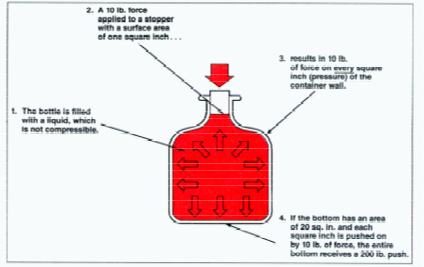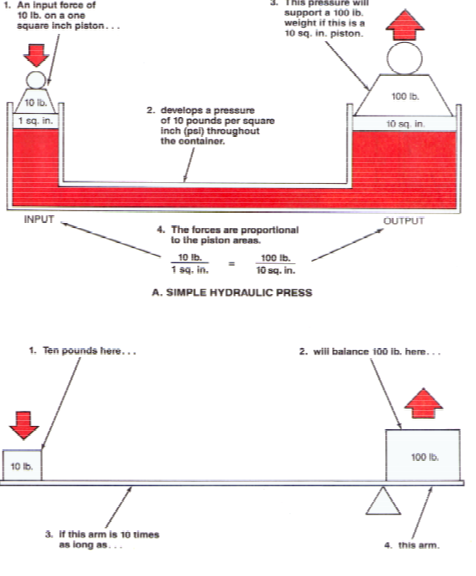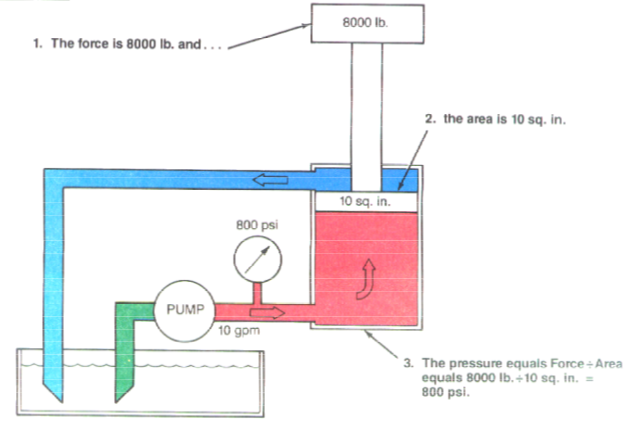35 Hydraulics
Michael Hrycay
Learning Objectives
Explain the operation of hydraulics.
Hydraulics
- Original Definition – “Operated, moved, or effected by water” (Webster)
- Modern Definition – “The use of fluid under pressure to transmit power or motion under precise control”
Why Use Hydraulics
- Very versatile means of power transmission
- Unyielding as steel, yet infinitely flexible
Hydraulics Vs. Pneumatics
| Hydraulics | Pneumatics |
| – Lower initial cost | – Higher initial cost- compressor |
| – Fluid is expensive | -Air is readily available |
| – Fluid may contaminate process | -Air is clean |
| – Difficult to store energy | -Energy easily stored |
| – Possible high noise levels | -Noise level low with mufflers |
| – Generally slower speeds | -High actuator speeds attainable |
| – High forces attainable | -Forces usually limited to shop air pressure |
| – More controllable speeds | -Air has spring like characteristics |
Pascal’s Law
Pressure of a fluid in a container was described by a famous scientist named Pascal. Pascal observed that the pressure applied to a confined fluid is transmitted equally and undiminished in all directions and at right angles to it’s container. Mathematically, the pressure can be determined as follows:
Pascal’s Law
Force = System Pressure X Area

- A bottle is filled with a liquid which is not compressible (this means the liquid will change shape, but not change volume under pressure.)
- A 10 lb force is applied to a stopper with a surface area of 1 inch squared.
- The pressure from the stopper results in a 10 lb force on the walls of the container
- If the bottom has an area of 20 square inches and each square inch is pushed on by 10 lb of force, the entire bottom receives a pressure of 200 lb.
Mechanical and Hydraulic Leverage
We may be familiar with mechanical leverage when using a lever and fulcrum. The longer the arm of the fulcrum, the greater the force multiplier.
Hydraulics provide a similar type of advantage, only instead of a lever arm (stick) we are using fluid. Instead of the length of the lever arm multiplying the force, the surface area of the piston multiplies the force.

Energy ins conserved. Even though a 10 pound force on the left can produce 100 pounds on the right, the trade off is that the 100 pound force moves ten times slower than the ten pound force. The trade off of more force is less distance.

How Pressure is Created
Pressure is created whenever the flow of fluid is resisted. This resistance may come from a load on an actuator or from a restriction (orifice) in the piping. If the load increases, so does the pressure.


